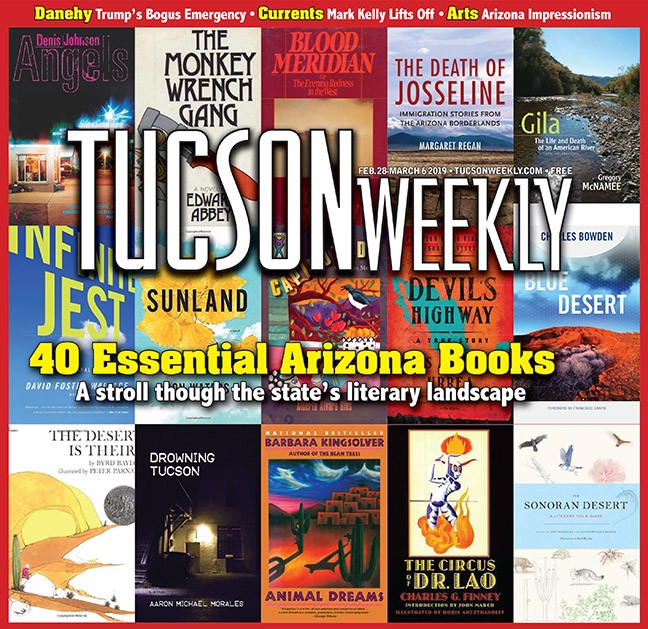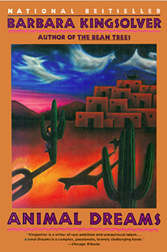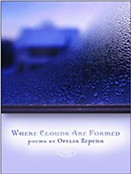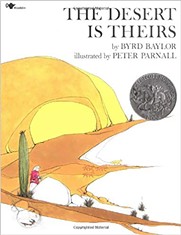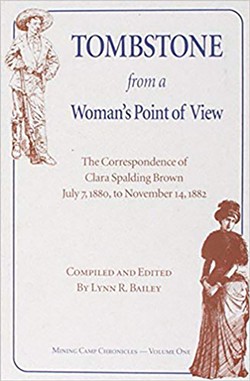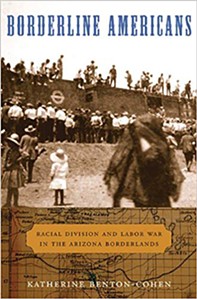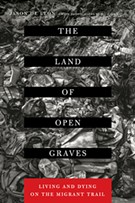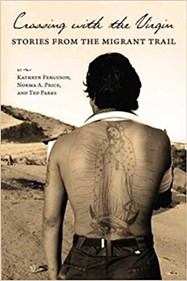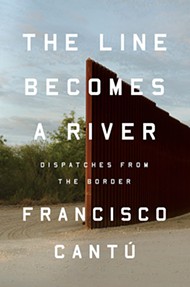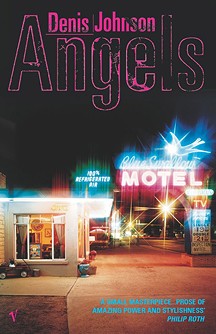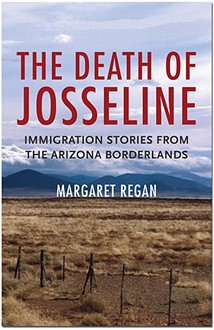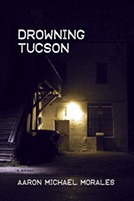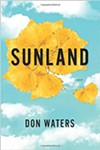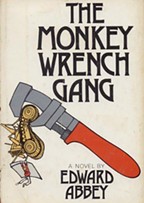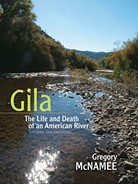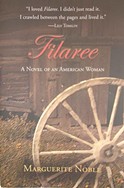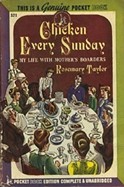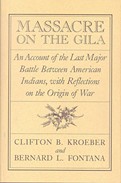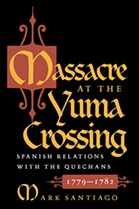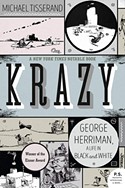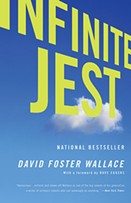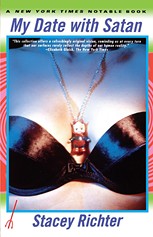Editor's note: Ahead of this year's Festival of Books, I asked a few local writers to share some thoughts about their favorite Arizona books. This list is not meant to be the definitive list of essential Arizona reading; it's merely a stroll through the vast literary landscape of books about Arizona. My thanks to Margaret Regan, Brian Smith, Tom Zoellner, Tom Prezelski, Jeff Gardner and Tirion Morris for their contributions. Dig in and add your favorites online at TucsonWeekly.com. —Jim Nintzel
Animal Dreams by Barbara Kingsolver. A former Tucsonan (and former Tucson Weekly contributor), Kingsolver is justly beloved for her first novel The Bean Trees. The hugely successful book launched Kingsolver into the national best-seller stratosphere and to a cascade of 15 published books and counting. But I've always loved Animal Dreams best. The story mostly unfurls in Grace, a fictional Arizona mining town closely resembling Clifton/Morenci, where Kingsolver reported on the three-year strike at the Phelps Dodge copper mine in the early 1980s (Kingsolver later wrote the nonfiction book Holding the Line about the strike). Animal Dreams has a political subplot about the Nicaraguan Contras, but it's mostly a poignant story about a young woman trying to find her place in life, an elderly father descending heartrendingly into dementia, and a team of Mexican-American mujeres who save the town from an evil mine company every bit as bad as Phelps Dodge. —Margaret Regan
Ceremony by Leslie Marmon Silko. A mixed-heritage writer who identifies as Laguna, Silko delves into the healing power of Native American ceremonial practices in this book. The story follows a mixed-heritage soldier damaged by World War II who learns anew the value of traditional wisdom. Silko, another Tucson writer (yay!), came to national attention after Ceremony—her first novel—was published. She's also a well-regarded poet, short-story writer and MacArthur winner who used the award money to support herself during the 10 years she put into writing her massive novel Almanac of the Dead. —Margaret Regan
Where Clouds Are Formed and Jewed'l-hoi/Earth Movements, O'odham Poem by Ofelia Zepeda. A Tohono O'odham poet, linguist and Regents Professor at the UA, Zepeda was born in Stanfield, Arizona, near the northern end of the Tohono O'odham nation. Raised near the cotton fields, Zepeda is bilingual in her native language and in English. Her poems are often bilingual too, with O'odham text on one page, and the same poem in English on the other, but even her poems in English the rhythms and radiance of O'odham. Her poems often evoke that natural world of the Sonoran Desert—its clouds, its rain and its sun—and the lives of the people; it's a joy to hear her read them in O'odham. Zepeda the linguistic scholar compiled the first-ever O'odham grammar book, to encourage the learning and speaking of the language, a feat that helped win her the MacArthur genius fellowship. —Margaret Regan
Byrd Baylor, an Arizonan now in her 90s based in the wilds near Arivaca, has written as many as 20 lyrical illustrated books about the desert, beloved by children and their parents alike. The books are gorgeous lessons in the desert's animals and plants, and the traditional practices of the Sonoran Desert's first people. Artist Peter Parnall made the delicate drawings. Many a time I put my children to sleep (or kept them awake!) reading them The Desert Is Theirs; When Clay Sings and Sometimes I Dance Mountains. Sweet memories! —Margaret Regan
Adventures in the Apache Country: A Tour Through Arizona and Sonora by J. Ross Browne. Illustrated by the author. 1869. In 1864, while the Civil War still raged in the East, the Irish-born writer J. Ross Browne traveled through an Arizona newly deeded to the United States by the Gadsden Purchase. In his witty and acerbic account of his journey through the Arizona frontier, Browne sputtered in frustration over the primitive town of Tucson, "a city of mud boxes, dingy and dilapidated, cracked and baked into a composite of dust and filth," and marveled over the emerald-green valley to the city's south, along the flowing Santa Cruz River. Browne was also a shrewd observer of the Territory's peoples, from freshly arrived whites seeking fortune in silver and gold, to Mexicans suddenly under American rule, to Apaches fighting back. Browne shared plenty of the racial prejudices of his day, reviling the Apaches in particular, but the clear-eyed journalist in him also told the truth of the injustices meted out to Native Americans. Reporting on a massacre of 30 Apaches falsely accused of theft, he writes witheringly that these innocent people "were killed on general principles." —Margaret Regan
Tombstone from a Woman's Point of View: The Correspondence of Clara Spalding Brown, July 7, 1880, to November 14, 1883, edited by Lynn R. Bailey. Journalist Clara Spalding Brown, like J. Ross Browne, took a dim view of Territorial Tucson. Its flat-roofed adobes and narrow streets made this "odd city" look "more like an ancient Bible town than anything else," she wrote. But her real subject was Tombstone at the height of silver mania. Brown lived in the burgeoning mining city from 1880 to 1882, and reported on life there in dispatches for the San Diego Daily Union, later compiled as a book. A rare and welcome document of Wild West Arizona written by a woman, her work chronicles the roughness of the raucous mining town. She took note of the town's prevailing hatred of Chinese workers and gave special attention to the lives of women in this male-dominated camp. The "respectable" women of her social class trying to "civilize" the place lived side by side with women who labored in the boarding houses and restaurants that served miners. The women of the "demi-monde"—prostitutes—were "very numerous and showy." Not surprisingly, women of different classes rarely intermingled. "As long as so many members of the demi-monde" patronized the town dances, Brown wrote, "many honest women will hesitate to attend." —Margaret Regan
Borderline Americans: Racial Division and Labor War in the Arizona Borderlands by Katherine Benton-Cohen. This contemporary history by a Georgetown University professor zeroes in on the harsh racial boundaries in Cochise County—including in Tombstone—in the late 19th and early 20th centuries. An especially fine chapter tells the horrifying tale of the Bisbee Deportation of 1917; some 1,300 miners, many of them immigrants, were unlawfully rounded up, packed onto trains, and dropped into the New Mexico desert in the summer heat. They were forbidden to return under pain of death. Benton-Cohen was a historical consultant to the recent acclaimed documentary movie Bisbee '17. The prejudices of early Arizona recorded in these histories nowadays feel like a prologue to the hatred aimed at immigrants today. A parade of contemporary authors have worked hard to tell the stories of today's border crossers and to convey the epic tragedy of the thousands of migrant deaths in the same borderlands where racial wars raged more than a century ago. —Margaret Regan
The Land of Open Graves by Jason De León, a University of Michigan anthropologist, takes its grim title from the migrant dead who lie in the Sonoran Desert, their corpses turning first into bones then dust, then scattering to the winds. De León describes how he tramps through Arizona's killing fields to record and retrieve the belongings left behind by the desperate travelers. Honoring the dignity of each and every crosser, both the living and the dead, De León has created an innovative new archaeology. The belongings he excavates—backpacks, tuna cans, shoes—are cultural artifacts as valuable and as sacred as Egypt's ancient mummies or Arizona's prehistoric pots and baskets. His breakthrough work has earned him the MacArthur genius award. —Margaret Regan
Crossing with the Virgin: Stories from the Migrant Trail by Kathryn Ferguson, Norma A. Price and Ted Parks. These three Samaritan activists from Tucson take turns telling their encounters with migrants in the desert, and their efforts to save the travelers' lives with water, food and medical help. Disturbing passages describe episodes of Border Patrol indifference. In one episode, Ferguson uses her watch to record the precious minutes passing by as a border agent delays giving aid to a border crosser in medical trouble. A reader can almost hear the tick tock, tick tock, of time going by as the sick man begins to fail. The feisty Ferguson, also the author of The Haunting of the Mexican Border, worked to save migrant lives almost up to the minute of her own untimely death two years ago. Price, a retired physician in her 70s still trekking the desert helping people at risk, last year won the national Hero of Health Care and Human Rights award given by Physicians for Human Rights. —Margaret Regan
Border Patrol Nation by Tucsonan Todd Miller broadly covers the Border Patrol's work throughout the country; he details how a legal loophole allows Border Patrol agents to abridge certain constitutional rights of American citizens within 100 miles of any U.S. border, including along the Atlantic and Pacific coasts. From a legal point of view, the Border Patrol has special authority along the entire geographic perimeter of the U.S. Also the author of Storming the Wall, in one stunning Arizona chapter, Miller is an eyewitness to Border Patrol abuses in the Tohono O'odham Nation. —Margaret Regan
The Line Becomes a River: Dispatches from the Border by Francisco Cantú, another Tucsonan, is a lyrical insider story about his four-year stint as a Border Patrol agent in the southwest deserts. He gives horrifying accounts of colleagues destroying lifesaving jugs of water and food that were left out for migrants in need, and he details his anguish over his own deeds, from failing to chastise those wayward agents to detaining a pregnant woman. The final and best section is set in Tucson; Cantú has fled the force by that time and must confront the laws he enforced as an agent when a friend is arrested and detained. Trying to help the man's bereft wife and children, Cantú see firsthand how the laws he enforced destroy a family. —Margaret Regan
Tom Miller, a renowned Tucson author, wrote On the Border: Portraits of America's Southwestern Frontier more than a quarter century ago. It's never gone out of print and in this era of threats to wall off the entire border permanently, its insights are still invaluable. Miller took a one-man road trip along the U.S./Mexico border, crisscrossing the line from the Gulf of Mexico to the Pacific Ocean. He concludes that the borderlands are a place-in-between, 2,000 miles long and 20 miles wide, a distinct a 20-mile-wide "third country" with its own vibrant, priceless culture, both bilingual and binational. Amen to that. —Margaret Regan
Angels by Denis Johnson. The Great Arizona Novel by a National Book Award winner and multiple Pulitzer finalist forever overlooked both in state, and, to a lesser degree, nationally, since its '83 release. The New Yorker called it "perfectly realized" and David Foster Wallace said it was one of the five great underappreciated novels since 1960. Johnson forever nailed me with this, before Jesus' Son. I wound up living in the desolate neighborhood between Sky Harbor Airport and downtown Phoenix where much of it takes place. Could taste the dusty creosote and oily pavement stains before I got there, saw Johnson's darkness in hot daylight and inside hearts. There's ever-slight AA dogma, because Johnson got clean just prior to penning this, but really it's a kind of pitiless modern noir, filled of low-road desperations, suckerpunch observations and ugly things I call beauty. There's even a Phoenix bank heist. And the sadness of protagonist Jamie, a single mom with no chance—for a while I'd look for her in women I'd meet, that strength despite grief and inefficacy. And the very working-class American characters I always knew growing up and continue to seek out. —Brian Smith
Red Line by Charles Bowden. By '89, Bowden began to define and master a kind of border-town despair encroaching on nihilism. Here we follow his fantastic visions, and also a tough motherfucker named Nacho, whose inevitable Tucson murder metaphorizes greater things—like, say, the beginning of the death of the borderlands and the death of the moral self. Or how America's love of drugs trashes and murders so many innocents stateside and in Mexico, running themes in his later books. Red Line is memoir and journalism, self-destruction and meditation, and a character study filled of lyrical abstractions set ablaze. It's grateful too, with some heart and hope of salvation beating through. Like Jim Harrison, the narrative punches along at Bowden rate and timing, with zero regard for scholarly trends. All his own. —Brian Smith
Blue Desert by Charles Bowden. By 2014, Bowden was America's greatest living writer. Then he died. Blue Desert was written in the mid-'80s but could've been 2015 or 1965. It's a compressed masterpiece, timeless stories of people, places and things—animal, mineral, and truth—as allegories of death and mortality in the Southwest. He's just beginning to plunge into the abyss here, into territories no one had thought to explore, or would ever have the pen-to-paper power and grace to begin to explore. It's a bulldozer of a ride, wrought with journalistic histories, writerly beauty and surgical sarcasm. "The desert is just so proficient at swallowing everything—dead steers, ghost towns, small girls." —Brian Smith
Capirotada by Alberto Álvaro Rios. Yes, Rios is Arizona's first poet laureate. But this memoir, detailing Rios' years growing up in Nogales—both in Arizona and Mexico—is a deceptively subtle ride of nuance, observation and ache, minus goofy literary pyrotechnics. I was humbled by his hushed glimpses into lives few would care to notice. Should've earned a National Book Award. —Brian Smith
The Death of Josseline: Immigration Stories from the Arizona Borderlands by Margaret Regan. At once a denunciation of U.S. immigration policy and reportage from the valleys of death, also known as deserts between Tucson and Mexico. I could not get Josseline Quinteros, this 14-year-old girl who expired in the desert, out of my head. All the migrant deaths humanized here. We aren't at war with them yet we let them die. This is a revealing, course-correcting work of journalism stacked with potent detail and wizard storytelling, much based on her prize-winning work in these very pages. This life-long Regan fan says anyone with a heart ought to read this. —Brian Smith
The Devil's Highway: A True Story by Luis Alberto Urrea. This Tijuana-born poet/novelist penned a harrowing nonfiction account of more than two-dozen Mexican immigrants lost in the merciless Arizona desert, "the Devil's Highway." It is pathos and humanity mixed with skilled reportage and border policy. Urrea's narrative skills win us—immigration screeds turn lyrical, the idiosyncratic becomes personal. Truth and horror sometimes in around-a-campfire parlance. This humanizing, Pulitzer finalist is a must-read now, in light of moron Trump and walls, and forever. —Brian Smith
Drowning Tucson by Aaron Michael Morales. Set in late-'80s Tucson, linked shorts that follow the fictional Nuñez family into finely wrought brutality. Old Testament Tucson, if you will, where poverty is circumstance. Miracle Mile pros cameo, and there are gangs and rapes and sad murders and shifting POVs, and even a map of Tucson to trace fractured chronologies. I read this living in Detroit and it made me miss Tucson bad. —Brian Smith
Sunland by Don Waters. I adored Waters' hugely underrated '07 collection of sun-damaged short stories, Desert Gothic, and not because some were set in Arizona. His debut novel is a Tucson-centered gallop that traces a failed high school English teacher who, like so many we know, moves here to care for Grandma. Soon he's running cheap prescription drugs over the border for retirement-community old-timers. Tim Sandlin-style hilarity ensues, against a heartbreaking backdrop of the Sonoran Desert and deceptively profound and kooky characters we develop little crushes on. —Brian Smith
Monkey Wrench Gang by Edward Abbey. My dad finally got me to read Edward Abbey. Not sure why I'd resisted for years. The writing is punchy and beautiful, crammed of muscular yet poetic descriptions of nature and people, balefully anti-growth and pro-booze ... my kinda thing. In ways it captured the zeitgeist of the Southwest I was born into, before the desert became over-manhandled. When I read it, I realized that old Nam vet George Washington Hayduke was likely the source of the inspiration to get me into my own pro-desert sabotages on bulldozers and tractors out in the desert east of Harrison Road when I was 10 years old. Did little good. That desert got gang-raped, now sad with condos and insanely air-conditioned big-front-glass stores. —Brian Smith
Gila: The Life and Death of an American River by Gregory McNamee. Here's a river bled dry, a grim forecast for future generations and a troubling metaphor of contemporary desert life. Man, this beautifully researched and written tome tackles the once mighty Gila River, its origin and its death, and contextualizes with aplomb what killed it and who suffered and what's next. Yes, the book borders the academic, should be taught in Arizona schools, but in no way does that interfere with the storytelling. The organization of facts is desperately important to story, which, to me, is all about how we continue to kill our (nature's) sons. —Brian Smith
La Maravilla by Alfredo Vea. A 1970s coming of age story set in the multiethnic Lower Buckeye neighborhood of Phoenix, teeming with rich descriptions, eccentric characters and a touch of Mesoamerican magic realism. —Tom Zoellner
The Mine with the Iron Door by Harold Bell Wright. A pastor who became a celebrity novelist moved to Tucson in 1914 and turned out this hokey story of a lost trove of riches in the Santa Catalinas, complete with a noble savage named Natchee who dispenses sorrowful ancient wisdom and wears a costume that sounds like it was purchased at a truck stop. Included here because it was a best-selling contributor to defective Arizona myth-making. —Tom Zoellner
Laughing Boy by Oliver La Farge. Here, by contrast, is one of the first American novels that took indigenous culture seriously. This novel about the troubled marriage between two Navajos contains a buried motivator so subtle that readers may miss it unless it's pointed out. A just winner of the 1930 Pulitzer Prize in fiction. —Tom Zoellner
Filaree by Marguerite Noble. Western writers generally depict pioneer ranch women as plucky heroines or depthless sex objects. Not here in this grim corrective, in which the main character is flaming pissed off on the very first page and only encounters fresh—and entirely believable—reasons to be angry.as her life shifts from the wilderness outside Globe onto the margins of urbanizing Phoenix. —Tom Zoellner
Frog Mountain Blues by Charles Bowden. The brilliant and frustrating giant of Arizona letters wrote a desperately needed 1987 book that reframes the way Tucsonans use and abuse their backyard mountains. —Tom Zoellner
The Blue Tattoo by Margot Mifflin. The unbelievable true story of the 14-year-old girl Olive Oatman kidnapped by the Yavapai and traded to the Mohave in a captivity narrative that lasted five years, leaving her with a distinctive tattoo on her chin and profoundly mixed feelings about returning to Anglo "civilization." —Tom Zoellner
Arizona: A History by Thomas Sheridan. Without question, the best general history of this state ever written, with expertly-chosen details, fearless truth-telling and an eloquent prose style that turns serious academic history into literature. —Tom Zoellner
Chicken Every Sunday by Rosemary Drachman Taylor. A warm and humorous memoir about the comings and goings in a Tucson boardinghouse in the 1910s, capturing the generous side of life in a booming copper economy. —Tom Zoellner
La Calle by Lydia Otero. Not everything wrought by the Drachman family worked out so well. This heartbreaking study of how the charming and irreplaceable Barrio Libre neighborhood got sacrificed to the real-estate dreams of Roy Drachman in the name of "urban renewal" will forever change your view of the city. —Tom Zoellner
Ambush at Bloody Run: The Wham Paymaster Robbery of 1889: A Story of Politics, Religion, Race and Banditry in Arizona Territory by Larry D. Ball. The robbery of a United States Army payroll and subsequent trial pitted black against white, Mormon against gentile, Republican against Democrat, and Democrats against each other. Ball's readable account brings clarity to a very messy story and to the tensions that shaped what Arizona was to become. —Tom Prezelski
Circus of Dr. Lao by Charles G. Finney. Finney was a notoriously cranky typesetter for the Arizona Daily Star in 1935 when he wrote this pioneering work of satirical fantasy that inspired writers like Ray Bradbury. The fictional town of Abalone remains strangely recognizable as Tucson decades later. —Tom Prezelski
Massacre on the Gila: An Account of the Last Major Battle Between American Indians, With Reflections on the Origin of War by Bernard L. Fontana and Clifton B. Kroeber. An 1857 battle near modern Maricopa pitted a party of Mohaves and Quechans against Maricopas and their allies in what was to be the last in a long series of conflicts. Fontana and Kroeber use the incident to discuss warfare and political customs of the tribes involved, and to reflect on what this particular battle says about men's tendencies to fight in general. —Tom Prezelski
Massacre at the Yuma Crossing: Spanish Relations with the Quechans, 1779-1782 by Mark Santiago. In what is quite possibly the best book about the Spanish period in what became Arizona, Santiago describes an attempted colony on the Colorado River which failed tragically after a series of broken promises and a failure to appreciate the dynamics of tribal relationships. He gives two forgotten figures their due: Olleyquotequiebe (Salvador Palma), who led the Quechans in what became the most successful revolt against colonial rule in the southwest, and Father Francisco Garcés, the martyred priest who genuinely respected the natives and warned the Spanish authorities to do the same. —Tom Prezelski
Krazy: George Herriman, a Life in Black and White by Michael Tisserand. This is a profusely illustrated biography of early 20th century cartoonist George Herriman, whose influential and very strange comic strip Krazy Kat was inspired by his frequent trips to northern Arizona. One of the most interesting bits of trivia in here is that the zig-zag design in Charlie Brown's shirt was intended by Charles Schultz to be an homage to the southwestern tribal motifs that Herriman incorporated in his work. —Tom Prezelski
Blood Meridian by Cormac McCarthy. This vivid, powerful and often horrifying Western captures the scenery and oppressiveness of the Sonoran Desert unlike any other novel. Set all throughout the borderlands region, this ultra violent tale subverts common cowboy narrative, setting Westerners as the bad guys, with just a mild amount of fantasy thrown in for good measure. As someone reads this dark book, they can often feel the shadows pulling in toward them from all corners. Truly an unforgettable read. —Jeff Gardner
Infinite Jest by David Foster Wallace. If you've lived in Tucson for any span of time and haven't heard of this book, have you really lived in Tucson? This post-modern (or post-post-modern, if you're not into brevity) labyrinth landed Wallace a MacArthur Fellowship. While not set exclusively in Tucson, many scenes are. And specific mentions to the University of Arizona, Whataburger, and the Rincon and Catalina Mountains make it forever part of this city's history whether you like it or not. —Jeff Gardner
Double Wide by Leo W. Banks. Longtime Arizona journalist Leo W. Banks made his fiction debut with this mystery about a disgraced former Major League Baseball pitcher who has retreated to managing a tiny village of trailers on the edge of Tucson when he finds his former catcher's dismembered hand left in a box on his porch. From there, Leo gives us an old-school potboiler involving drug cartels and desperados. Fun stuff. —Jim Nintzel
My Date with Satan by Stacey Richter. Richter's debut collection of short stories veered from prom night right into the Twilight Zone. It's little wonder that Richter was a recipient of a Pushcart Award for her work. —Jim Nintzel
The Sonoran Desert: A Literary Field Guide edited by Eric Magrane and Christopher Cokinos and illustrated by Paul Mirocha. There are few communities who love their natural surroundings as much as Tucsonans love their slice of the Sonoran Desert—a love paired with an overwhelming desire to prove to the world that there is, in fact, more to the desert than sand and sky. "The Sonoran Desert: A Literary Field Guide" was published in 2016 by the University of Arizona Press. Not quite a poetry collection, not quite an illustrated field guide but nestled beautifully somewhere in between, this book is a must read for anyone who appreciates the mighty saguaro and the taunting tarantula alike. —Tirion Morris
The Contributors
Margaret Regan is the author of The Death of Josseline: Immigration Stories from the Arizona Borderlands and Detained and Deported: Stories of Immigrant Families under Fire, both from Beacon Press. Regan will be a moderator at the Tucson Festival of Books, for Behind Bars: The Injustice of Justice, a panel about prisons featuring authors Shane Bauer, Lara Bazelon and Albert Woodfox, at 10 a.m. Saturday, March 2, at Gallagher Theater.
Brian Smith is the author of Spent Saints and Other Stories (Ridgeway Press) and Tucson Salvage — Tales and Recollections of La Frontera (Eyewear Press). Smith appears at Tucson Festival of Book at 1 p.m. on Sunday, March 3.
Tom Zoellner is a fifth generation Arizonan and the author of the forthcoming book Rim to River: Arizona Essays. He will be the moderator of two panels at the Festival of Books: Remembering Elmore Leonard (11:30 a.m. Saturday, March 2) and Capturing the Political Zeitgist (2:30 p.m. Saturday, March 2).
Tom Prezelski is the author of Californio Lancers and a former member of the Arizona House of Representatives. He writes a monthly column on Southern Arizona history for the Pima County FYI newsletter.
Jim Nintzel is executive editor of Tucson Weekly and Tucson Local Media. He will be moderating two panels at the Festival of Books: Russia In Our Front Yard with authors David Corn, Michael Isikoff and Craig Unger, who will draw on their years investigating President Trump's bromance with Putin, Russia and the Russian Mafia (4 p.m. Saturday, March 2) and Russian Impulses with Corn, Isikoff, Unger and former U.S. ambassador to Russia Michael McFaul (10 a.m. Sunday, March 3).
Jeff Gardner is the associate editor of Tucson Weekly and Tucson Local Media.
Tirion Morris is the web editor of Tucson Weekly and Tucson Local Media.

